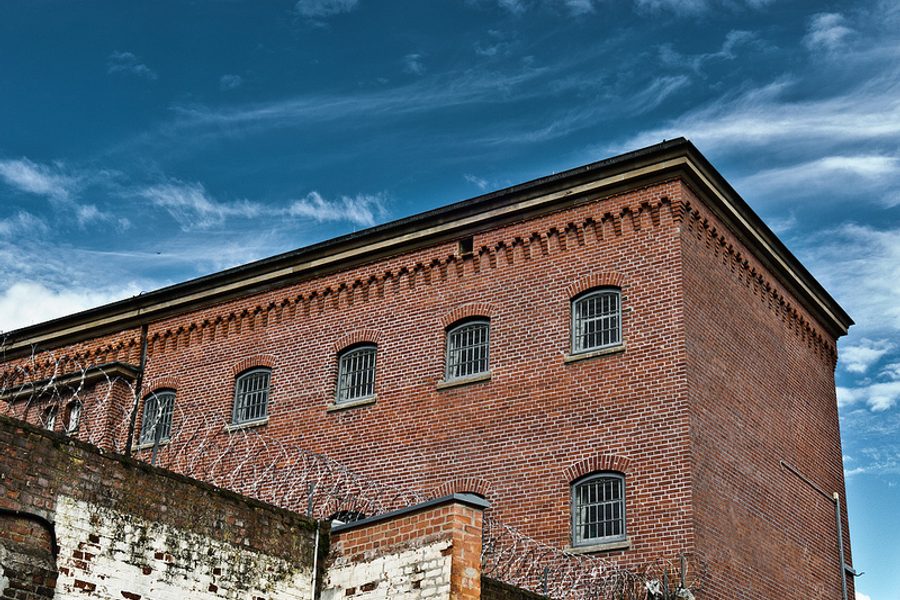Introducing The Prison Complex: Your Source for Tracking the United States’ Incarceration Epidemic
Matt Stroud

When Michael McIntosh visited his then-20 year-old son at the privately run Walnut Grove Youth Correctional Facility near Jackson, Miss. on a Saturday in October 2009, he knew what to expect: a visiting room conversation with his son, and maybe a shared snack from a vending machine. They’d done this before. Though it wasn’t ideal, this was what passed for father-son bonding when one’s son was in the midst of a criminal sentence that wouldn’t end until 2013.
But on this particular Saturday, when McIntosh identified himself and recited his son’s inmate number to the correctional officer overseeing the visitation room, he got an odd response. His son wasn’t there.
“Well, where is he?” McIntosh asked.
The CO didn’t know.
What followed was a father’s worst nightmare — a series of events that exemplified not only the dysfunction of a specific facility, but also the shielded chaos of our national prison system as a whole.
McIntosh began a search for his son. He followed up with Walnut Grove’s administrators, all the way up to the warden, and eventually contacted the Boca Raton-based corporate offices of GEO Group, the publicly traded, multi-billion dollar private corrections company contracted with the State of Alabama to operate Walnut Grove. He got nowhere. The search lasted six weeks. Eventually, McIntosh received a tip from a prison nurse that he might be better off calling local hospitals rather than the facility’s overseers. A report from The Southern Poverty Law Center explains what happened next:
After more frantic phone calls, he found [his son] in a hospital in Greenwood, hours away. He was shocked at what he saw. His son could barely move, let alone sit up. He couldn’t see or talk or use his right arm. “He’s got this baseball-size knot on the back of his head,” McIntosh said. “He’s got cuts all over him, bruises. He has stab wounds. The teeth in the front are broken. He’s scared out of his mind. He doesn’t have a clue where he’s at — or why.”
If this series of events seems difficult to believe, that’s because it is; it’s tough to imagine that a state-licensed juvenile detention center would attempt to hide a prisoner from his family after that prisoner had been beaten unmercifully. What’s even more difficult to believe is that McIntosh’s situation actually lead to action. His complaints — and those of others — inspired more than one investigation. One of them, summarized last year in a settlement agreement (PDF), illustrated a real life culture of prison chaos that read like fiction:
…the investigation uncovered pervasive violations of state and federal civil and criminal law and a wholesale lack of accountability by prison officials. For example, staff of [Walnut Grove] and those responsible for overseeing and supervising the youth engaged in sexual relationships with the youth; they exploited them by selling drugs in the facility; and the youth, ‘handcuffed and defenseless[,] have been kicked, punched, and beaten all over their bodies.’ They are frequently subjected to chemical restraints for the most insignificant of infractions and are denied necessary medical care. And although many of the offenders have been ordered to finish their education, ‘the facility prevents most youth from accessing even the most basic education services.’”
In the end, the story of Walnut Grove’s unbelievable lawlessness got media attention. Various lawsuits have been filed. A U.S. Department of Justice investigation unfolded and confirmed what various people, including McIntosh, had said repeatedly: Walnut Grove was a violent cesspool. Eventually, GEO Group lost their Mississippi prison contracts, and the mayor of Walnut Grove, the town housing the youth correctional facility, received prison time for his role in the incident. Next month, McIntosh’s son, Mike, will finally be released from prison.
But not every situation ends like this. Not every act of violence in prison gets media attention. Not every questionable prison expenditure — or every prisoner complaint, or even every brutal prison riot — gets the attention it should. Even if it does, it’s never certain that any outlet — or activist, attorney, or government investigative body — will follow up or even acknowledge a problem’s presence.
Which is why this blog exists.
Casual discrimination and inconsistent criminal sentencing laws have made the United States a prison capital – home to 25 percent of the world’s incarcerated population, and home to more prisoners than anywhere else on earth by a huge margin. While it’s possible that stories about horrific circumstances at places such as the Walnut Grove Youth Correctional Facility have crossed your path, there are many more stories like it, happening all over the country, among the nearly 2 million people behind bars in state and federal correctional facilities across the United States.
The Prison Complex, a new blog from In These Times, tracks and reports news about those prisoners — and about all the dilemmas we face as a nation of jailers. You’ll find frequent updates here, some of them in-depth, most of them short, highlighting new legislation or interesting prison-related news stories, that seek to paint a portrait of the massive prison system we’ve come to oversee and fund.
As you follow this blog, I hope you’ll gain a firmer grasp on our nation’s prison industrial complex. I hope you’ll better understand why situations like Mike McIntosh’s aren’t as difficult to believe as they might seem. And I hope then, that you’ll have a clearer idea of the decisions we all need to make, in the hopes that someday we might live in a nation that doesn’t sound sarcastic or clueless when it claims “liberty and justice for all.”


